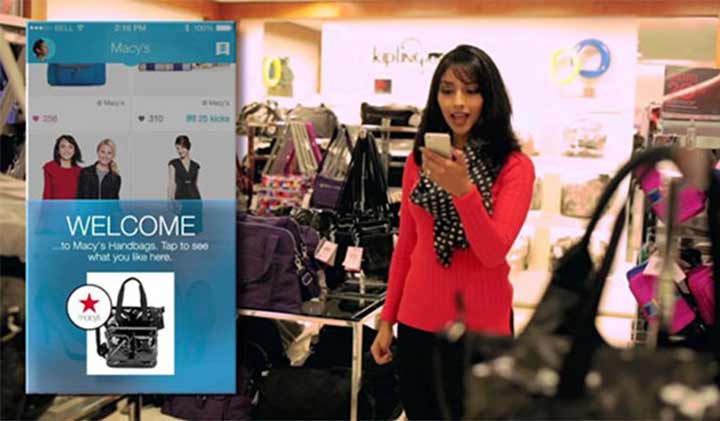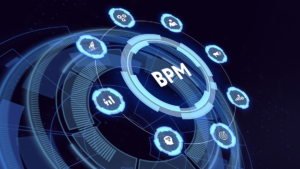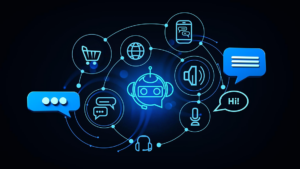

ACL Digital
5 Futuristic Game Changing Technologies Transforming Retail
There is a technology revolution underway in Retail industry. Retailers must adopt emerging technology paradigms to succeed in the future by building new capabilities and innovations around multi-channel consumer experience that result in WOW moments.
Here we bring the top five innovations that are sure to change the way we shop in the future:
Top Upcoming Retail Technologies:
1. Machine Learning & Artificial Intelligence(AI)
Artificial Intelligence empowered by machine learning is contributing towards data deluge in retail industry. According to Markets & Markets, the artificial intelligence market is expected to be worth $16.06 Billion by 2022 with adoption of AI in media and advertising, retail, finance, and healthcare.
AI enables retailers:
- To pinpoint critical action areas within a group of possibilities
- With an increased ability to consume and analyse data
- To predict the future and plan for scenarios
Some of the major use cases for AI are:
- Amazon uses AI for product recommendations and with that they have achieved a high level of customer relevance along with 35% of overall sales.
- Amazon Go, which provides the checkout-free shopping experience by using technologies like that of self-driving cars: computer vision, sensor fusion and deep learning. Amazon Go can be considered as a classic example of Smart Shelves.
- Netflix’s content recommendation engine is tuned for hyper-specific categorization, recommending the right content to the exact people who would be interested in them. This resulted in increased viewership and lower churn. With their ongoing global expansion, Netflix revamped the technology behind their recommendation engine and designed it to shoot region based preferences.
2. Robotics
For Distribution center operations in Retail, Robotics has emerged as the best solution so far, by improving order picking accuracy and speed. According to Gartner, 45% of the fastest growing companies will have fewer employees than smart machines by 2018. Not only managing warehouses, now robots are all set to help customers by speaking in their own local languages.
Best examples of Robotics in retail space:
- Amazon’s Kiva robots have helped Amazon to overcome the challenge of picking a virtually endless variety of goods from warehouse shelves and arranging them appropriately in a box for home delivery. Kiva helped Amazon lowering the operational cost by 20%
- Walmart uses drones within its warehouse to monitor out-of-stocks and slotting accuracy
- Softbank’s “Pepper” robot is designed to play numerous roles in the store: Associate, Concierge and Brand Ambassador
3. RFID Tags
RFID helps retailers combat theft and loss, track store inventory in real time, and find items on the go. It relies on a small chip that is implanted in a tag, which can record and store data, such as a serial number, price, or purchase record. By implementing the complete RFID infrastructure: tag antenna, reader and reader antenna, inventory can be tracked efficiently and further helps in “one shot” scanning of entire cart filled with goods at the cash counter. The technology has enabled the vision of smart shelves by helping the stores in identifying misplaced products, empty shelves and to track the same at the backend.
- Levi’s with the help of Intel, uses RFID tags and sensors to help it track store inventory in real time.
4. Beacons
These are awesome little high-tech tools broadcasting radio signals transmitting a unique ID number that tells a listening device which beacon it’s next to. For example, when a brand installs beacons in their store, all the beacons will have certain IDs, registered in their dedicated app. The brand app immediately recognise that the incoming ID is important and is from specific counter or shelf. Once the identification of ID is done, the app links the ID to an action or piece of content stored in the cloud and displays personalised offer to the user.
Big players like Macy’s, Neiman Marcus and Walgreens are leveraging the power of Beacons for powerful Proximity Marketing campaigns, bringing out the touch of personalization for their shoppers.

Source – Macy’s
5. Virtual and Augmented Reality (VR and AR)
This enables retailers with opportunities to transform the way shoppers shop. Now, customers can buy shirts of correct fit directly from the brand app without travelling to the store or can buy furniture from store by placing 3-D virtual models of products in real settings. Applications using either technology can eliminate customer pain points and create a differentiated, personalized customer experience.
- One classic example of VR in retail is Lowe’s Holoroom. It is a virtual reality home improvement design and visualization tool that provides shoppers an immersive, intuitive experience of being in the room of their dreams while in-store or on the go.
- Converse Shoe Sampler iPhone app can be a cool example of AR in retail, which allows shoppers to try a shoe just by pointing their phone on their leg to check the fit and buy directly with a click.
To sum up, as retailers reimagine and reshape business to keep pace with technology the following key points need to be kept in mind to achieve the business objectives.
- Rethink, and Strategize consumer shopping processes and store operations using latest technologies
- Understand your customers better and develop solutions to create WOW moments.





